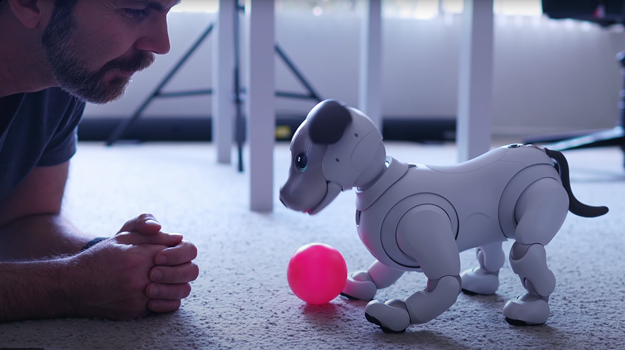Increased studies convey the unique benefits of robotic pets like Sony’s aibo.
Companion robots have been with us for over a decade, yet are not that well known. One reason is the misunderstanding of what a robot is and isn’t. And part of that is due to the term robot itself, and its portrayal in film and books. A friendlier term is animatron, android, or social-robot, sometimes called “socialbots.”
A specific class of socialbots are made to resemble animals, and they’re often referred to as “robopets.” Some of today’s robopet companions are super smart, independent creatures. They know where they are in the world, they have eyes and ears, and they can feel someone touching them. They roam independently and with a purpose. They even bark and play.

Sony began developing such creatures in the mid-1990s and in 1999 introduce aibo, the world’s first robotic pet. It was a product of its time and was by today’s standards somewhat limited. But it established the concept—technology would catch up. Sensors got better (Sony is a leader in the sensor field), and AI got more efficient and accessible through the cloud.
In the late 1990s, Sony wanted to introduce people to robots and living with robots. They began working on social and companion robot concepts—socialbots and robotic pets. Over the years, at its Computer Science Laboratory (CSL) think tank Sony experimented with and produced companion and entertainment bots.
ADVERTISEMENT – This article and research was funded by Sony Electronics Inc.






